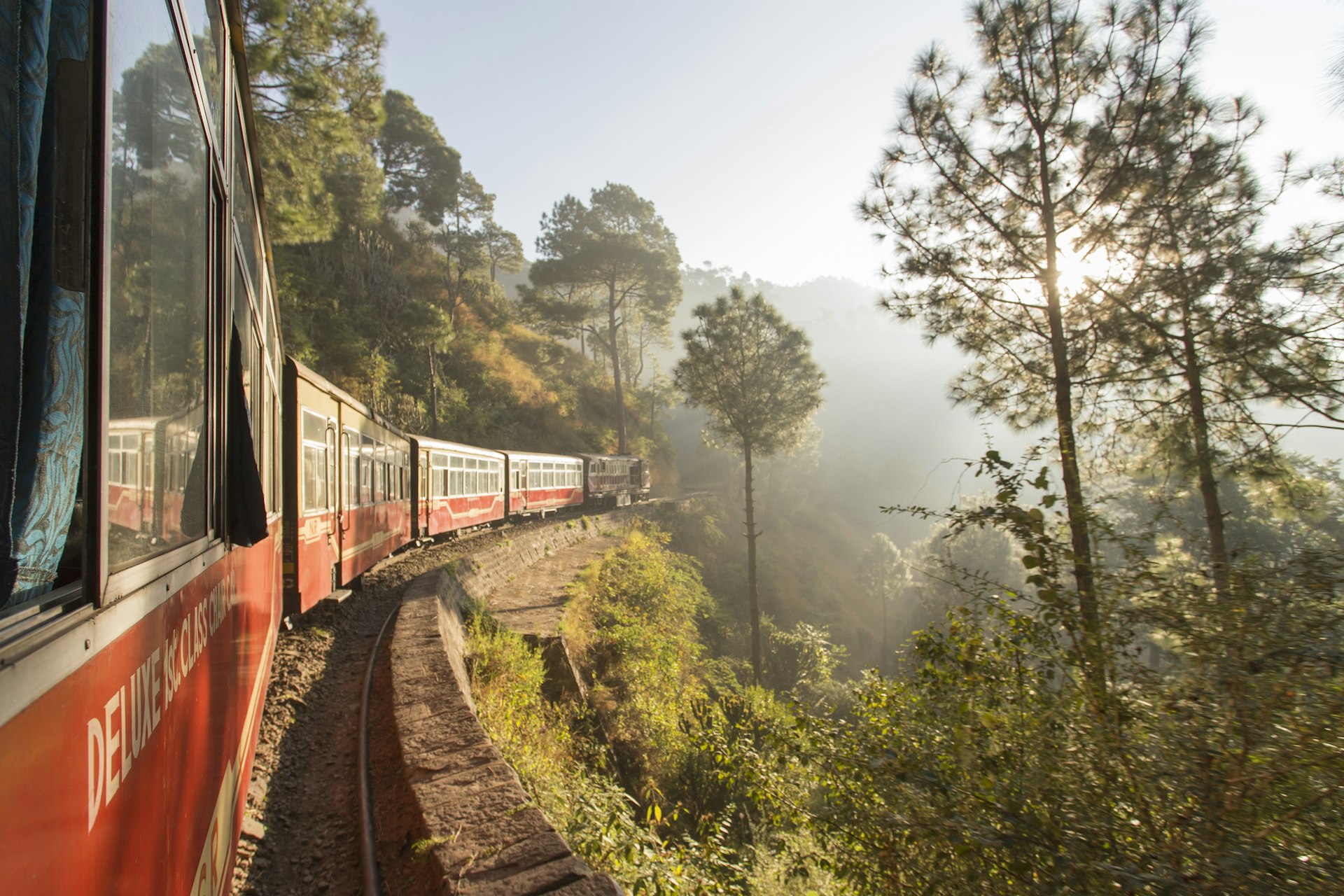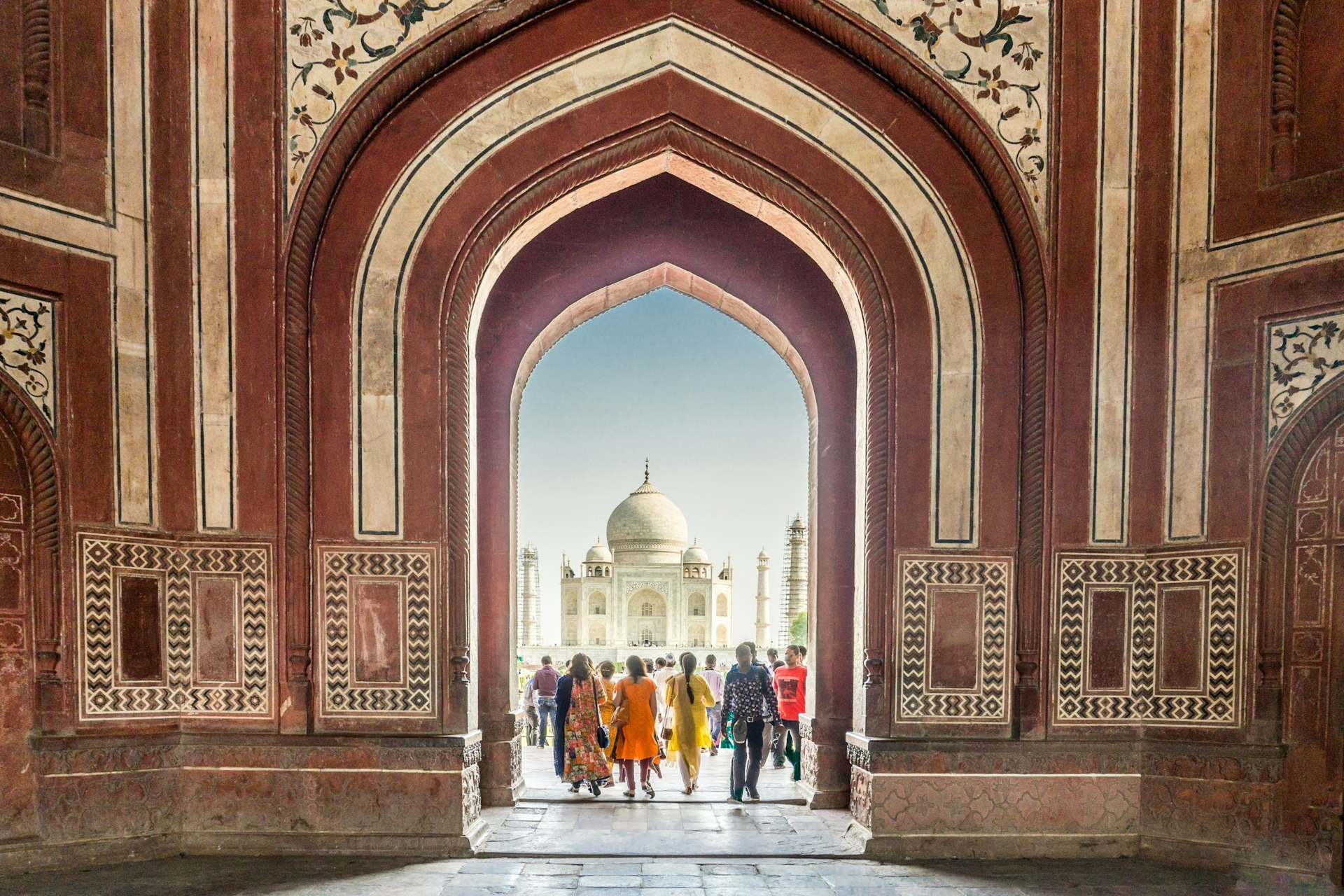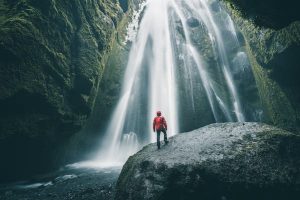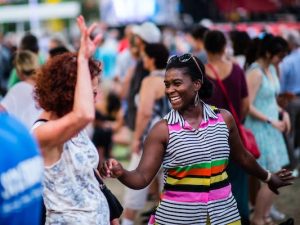
India is the country that’s almost a continent. From the soaring peaks of the Himalayas to the waterlogged jungles of Kerala and the dry-as-a-bone deserts of Gujarat and Rajasthan, this enormous nation covers an astonishing variety of terrain, so there’s always somewhere worth visiting no matter what the weather is doing.
The northern hemisphere winter – from December to March – is the optimum time to visit the vibrant cities and historic temples and forts of the Indian plains, while the rainy lowland summer is peak season in the dry mountains of Ladakh. However, even at the height of the monsoon, there are plenty of good reasons to visit this remarkable nation, and the festival calendar is packed year-round.
Here’s our guide to the best times to come to India.
Get more travel inspiration, tips and exclusive offers sent straight to your inbox with our weekly newsletter.  Tourists flood the beaches of Goa, including Arambol, during high season © saiko3p / Getty Images
Tourists flood the beaches of Goa, including Arambol, during high season © saiko3p / Getty Images
December to March is best for beach trips, tiger safaris and touring temples
The peak season for tourism in India coincides with perfect traveling weather – rainfall is sparse, views are clear, air humidity falls, and the dry, sunny days are ideal for beach trips and exploring India’s teeming cities.
Temperatures drop to manageable levels, with warm days and cool nights, making it easier to sleep, though this is also the time for peak prices. Another hassle is the morning fog, which disrupts air travel and other forms of transport in the northern plains.
December to March is also the sweet spot for lowland adventures. National parks are drier, and there’s less foliage to hide the wildlife, and animals tend to be more active when temperatures are moderate. For a good chance of tiger sightings, head to Kanha, Bandhavgarh, and other national parks in the central plains.
In the hills, it’s a slightly different story. While there’s an undeniable magic to seeing Shimla or Darjeeling dusted with snow, many hotels shut up shop for the winter, and mountain trails and roads over high passes become impassable, including the main roads to Ladakh.
 Spend shoulder season seeking out the top sights of India’s great cities, like Delhi’s Jama Masjid © Udbhav Rai / Shutterstock
Spend shoulder season seeking out the top sights of India’s great cities, like Delhi’s Jama Masjid © Udbhav Rai / Shutterstock
June to November is the best time to hit the Himalayas
India’s shoulder season means different things depending on where you go in the country. Lowland areas get drenched by monsoon rain from June to September, and Goa’s beach resorts become ghost towns, but backpackers and trekkers flood into the mountains, filling Ladakh’s lodges, tented camps, and yoga retreats. This is the prime time for treks on India’s highest mountain trails.
Lowland areas and hill stations can give the impression of a country besieged by rain, but it doesn’t rain all day every day, and there’s still plenty to see and do. This is also a great time of year to find bargains on accommodations and tours.
As the rains clear from September, tourism picks up, but rates remain below the peak until December. With plenty of action on the festival calendar, the fall is a great time to visit almost all of India, except Ladakh, with the last road transport to Manali ceasing in late September.
 Hop on a train to the hill country to beat the heat © Philip Lee Harvey / Lonely Planet
Hop on a train to the hill country to beat the heat © Philip Lee Harvey / Lonely Planet
April to June is the best time to avoid crowds
India’s low season sees temperatures soaring to almost unbearable levels. By May, most of the country feels like an oven, and locals wait eagerly for the cooling effect of the monsoon. India’s cities can be furnaces at this time of year – sensible travelers head to the hill stations or stay close to the water on the coast.
On the other hand, tourists are thin on the ground during these hot and sticky months, making visits to popular sights such as the Taj Mahal a less hectic experience. This is also a great time for treks in the cooler foothills of the Himalayas. Accommodation prices are also low, though many beachside hotels in Goa close completely from May to September.
Festivals in India change dates with lunar calendars
While secular festivals in India follow the Gregorian calendar, most religious festivals follow lunar calendars, which means the dates of major festivals change every year. Muslim celebrations move forward by 11 days every year relative to the Gregorian calendar, and Hindu, Buddhist, and Jain festivals can fall in different months from year to year. Always check the dates of festivals before planning a trip – the Indian government has a calendar of the year’s gazetted government holidays.
January
It’s busy almost everywhere, and hotel rates peak, so book ahead, including for train trips. Delhi puts on a lavish display of civic pomp and circumstance for Republic Day on January 26 (don’t miss the army and police motorcycle stunt teams), while the Hindu festival of Sankranti is celebrated in different ways across India, from lavishing decorated cows with treats in South India to mass kite-flying, most famously in Gujarat.
Key events: Republic Day, Sankranti, Pongal, Jaipur Literature Festival.
February
February is a great month to explore the plains, with balmy weather almost everywhere, except in the mountains, where it’s just plain cold. It’s still peak travel season: you can sunbathe in the south and go trekking and skiing in the north at quaint mountain resorts in Kashmir, Himachal Pradesh, and Uttarakhand. A bonus for those visiting the Taj Mahal in February is Taj Mahotsav, a 10-day carnival of culture, cuisine and crafts featuring 400 artisans from all over India (and enough regional food to induce a curry coma).
Key events: Taj Mahotsav, Shivaratri, Vasant Panchami (can fall in January), Carnival in Goa
March
The last month of the high tourist season, March is baking hot in most of India, with early rains easing into the Northeast States. Elephants, tigers, leopards and other wildlife become easier to spot in the country’s national parks as undergrowth dies back and animals come out into the open to find water. March also sees India’s most colorful festival, Holi, where Hindus – especially in cities in the north – celebrate the beginning of spring by dousing anyone in range with water and colored powder. Many Tibetan Buddhist monasteries in the north hold masked dances for Losar, the Tibetan New Year.
Key events: Holi, Losar (can fall in February).
April
The heat is on in most parts of the country, but you can get good deals on accommodations and avoid the peak season crowds at popular sights such as Delhi’s Red Fort. The Northeast is wet, but it’s peak season for visiting Sikkim and highland areas of West Bengal, including Darjeeling.
Mahavir Jayanti commemorates the birth of Jainism’s 24th and most important tirthankar (teacher and enlightened being), while Sikhs celebrate Vaisakhi (the solar new year) in the middle of the month. Rama Navami is another big date as Hindus celebrate Rama’s birth with processions and enactments of scenes from the Ramayana (one of Hinduism’s sacred texts).
The Muslim holy month of Ramadan runs from April to May in 2022. Some Muslim-owned businesses close during the day, and people fast from sunrise to sunset. The breaking of the fast at Eid al-Fitr is marked by a feast of Indian Muslim cuisine, and Muslim women adorn their arms with mehndi (henna designs).
Key events: Mahavir Jayanti, Rama Navami (can fall in March), Ramadan.
May
It’s hot almost everywhere – incendiary, in fact. Hill stations are hopping, though, and in the mountains, the pre-monsoon trekking season is in full swing. Festivals take a back seat as humidity builds up, but the birthday of Buddha (Buddha Jayanti) is celebrated with gusto in Bodhgaya and Tibetan Buddhist areas.
Key events: Alphonso mango season in Maharashtra, Buddha Jayanti (can fall in April).
 Visiting the Taj Mahal in low season (April to June) can mean it’s less crowded © Scott Biales DitchTheMap / Shutterstock
Visiting the Taj Mahal in low season (April to June) can mean it’s less crowded © Scott Biales DitchTheMap / Shutterstock
June
June is low season in the lowlands. The rains arrive just about everywhere, bringing a welcome dip in temperatures but buckets of rain. Many national parks close, and hill station views vanish behind clouds. It’s a different story in the high Himalayas, as mountain passes open and travelers surge into Ladakh.
Key events: Sao Joao Festival (Goa).
July
It will be raining almost everywhere in July, and flooding and landslides can cause problems in many regions. For the best weather in the country, head to Ladakh, where dry days are perfect for early-morning yoga, meditation sessions and mountain hikes. Held in June or July, Rath Yatra, the Hindu Chariot Festival, sees effigies of Lord Jagannath (Vishnu as Lord of the Universe) hauled through the streets on vast, colorful chariots, most famously in Puri in Odisha (Orissa).
Key events: Hemis Festival (Ladakh), Rath Yatra (can fall in June).
August
The monsoon is still going strong in August. However, the rain may only fall for a few hours a day, which keeps tourist crowds pleasantly thin and accommodation prices low. As an added incentive, Kerala’s exhilarating boat races take place on the second Sunday of August.
Elsewhere, there are flag-hoisting ceremonies and parades in Delhi on August 15 to celebrate India’s independence from Britain in 1947. Ganesh Chaturthi, which can fall in September, sees the ritual immersion of thousands of colorful idols of the elephant-headed god in Mumbai.
Key events: Independence Day (15 August), Nehru Trophy Boat Race, Naag Panchami (can fall in July), Janmashtami (can fall in September), Ganesh Chaturthi (can fall in September), Onam (Kerala).
September
The rain usually peters out by mid-September, coinciding with the return of the snows to the mountain passes of Ladakh; check the timings of the last public buses heading downhill to Manali (they’re usually done by late September).
In other parts of the Indian Himalayas, the fall trekking season gets underway before winding down in late November as the trails become too cold for comfort. This is a great month to visit desert areas such as Rajasthan, which can be surprisingly green.
Key events: Navratri (can fall in October), Pang Lhabsol (Sikkim).
October
As the skies dry, the travel season kicks off in earnest, though peak season won’t arrive for a few more months. October brings good traveling weather to most of India, though the travel window for Ladakh closes as the snows gather. Rivers are full after the rains, making for spectacular waterfalls across the country and thrilling river rafting in Himachal Pradesh.
Many areas throw lavish celebrations for Dussehra, celebrating the victory of Hindu god Rama over demon-king Ravana and the triumph of good over evil (festivities are particularly colorful in Kullu and Mysuru). Diwali (Deepavali), which can fall in November, brings fireworks and twinkling lights to towns and villages across India.
Key events: Dussehra, Durga Puja, Gandhi Jayanti (October 2), Diwali (can fall in November).
 See decorated camels at the Pushkar Camel Fair, a livestock fair and celebration of Rajasthan’s culture © photoff / Shutterstock
See decorated camels at the Pushkar Camel Fair, a livestock fair and celebration of Rajasthan’s culture © photoff / Shutterstock
November
The climate in November is blissful in most places, but the northeast monsoon brings rain (though not as much as the summer monsoon) to the far south. In Rajasthan, Pushkar Camel Fair attracts 200,000 people and 50,000 camels, horses, and cattle. Sikhs celebrate Nanak Jayanti – the birthday of Guru Nanak, founder of Sikhism – with prayers, kirtan (devotional singing), and processions, especially in Punjab and Haryana.
Key events: Pushkar Camel Fair, Nanak Jayanti.
December
December is peak tourist season. You’re pretty much guaranteed glorious weather (except in the chilly mountains), and the beaches are blissful. Downsides include peak prices for accommodations, heavy demand for transport, and morning fog, which can play havoc with transport schedules.
December is also a big time for marriage ceremonies – look out for baraat (bridegroom’s processions) featuring a white horse, a marching band, a nervous groom, and often fireworks. Christian Goa and parts of Kerala and the Northeast Region come alive in the lead-up to Christmas, and Christmas Day is celebrated with feasting and fireworks.
Key event: Christmas Day.
India’s colourful Holi festival



